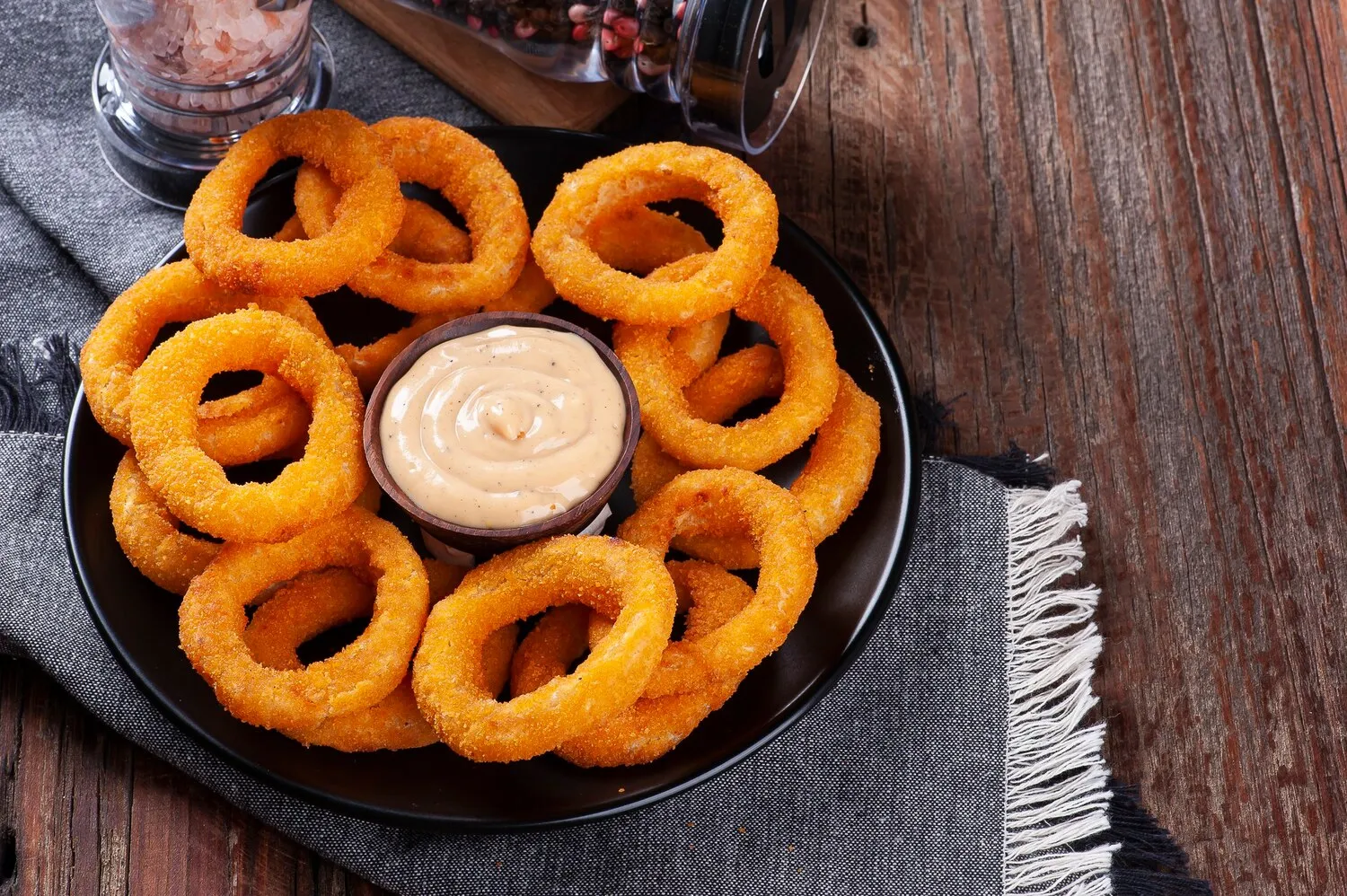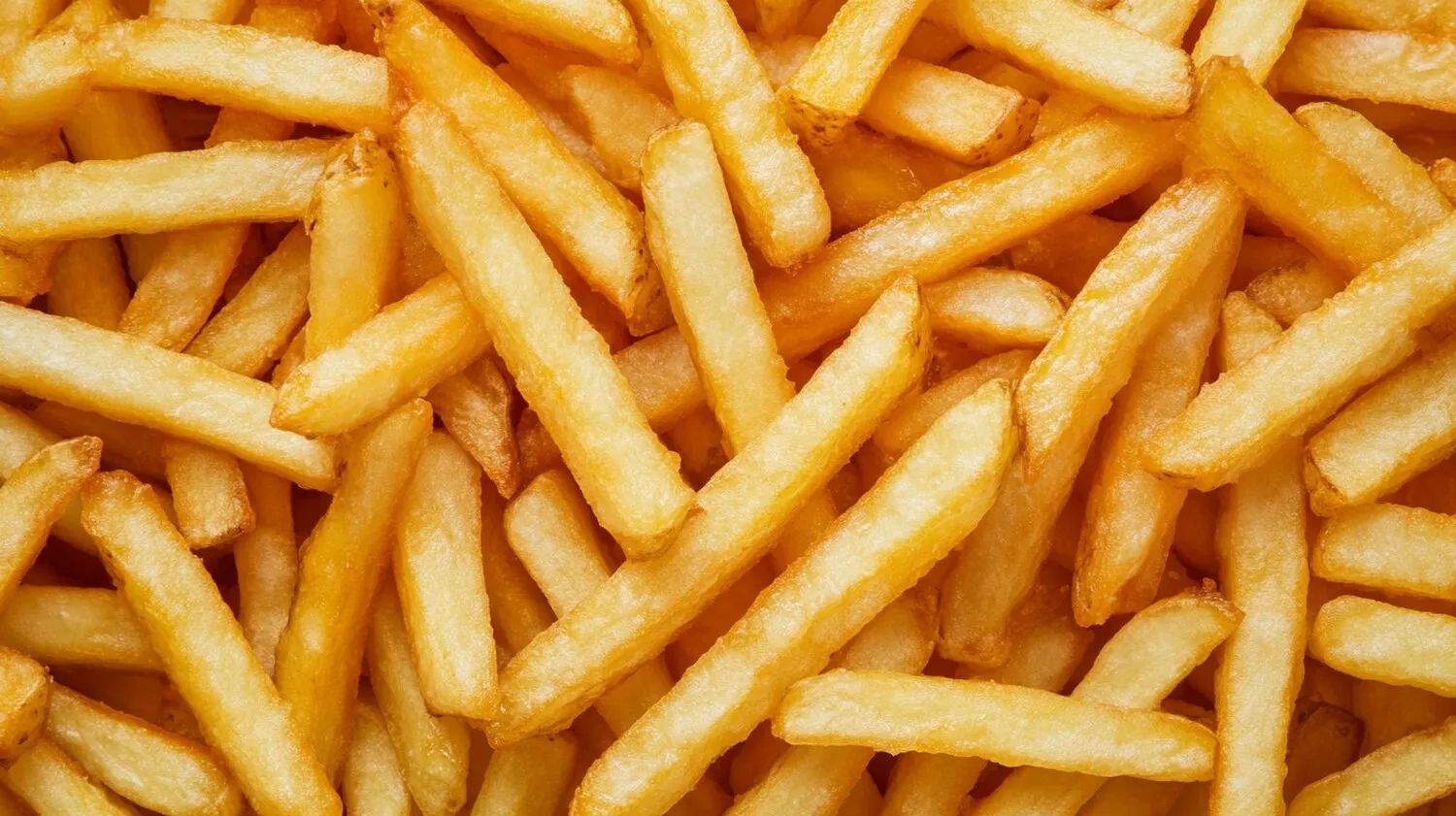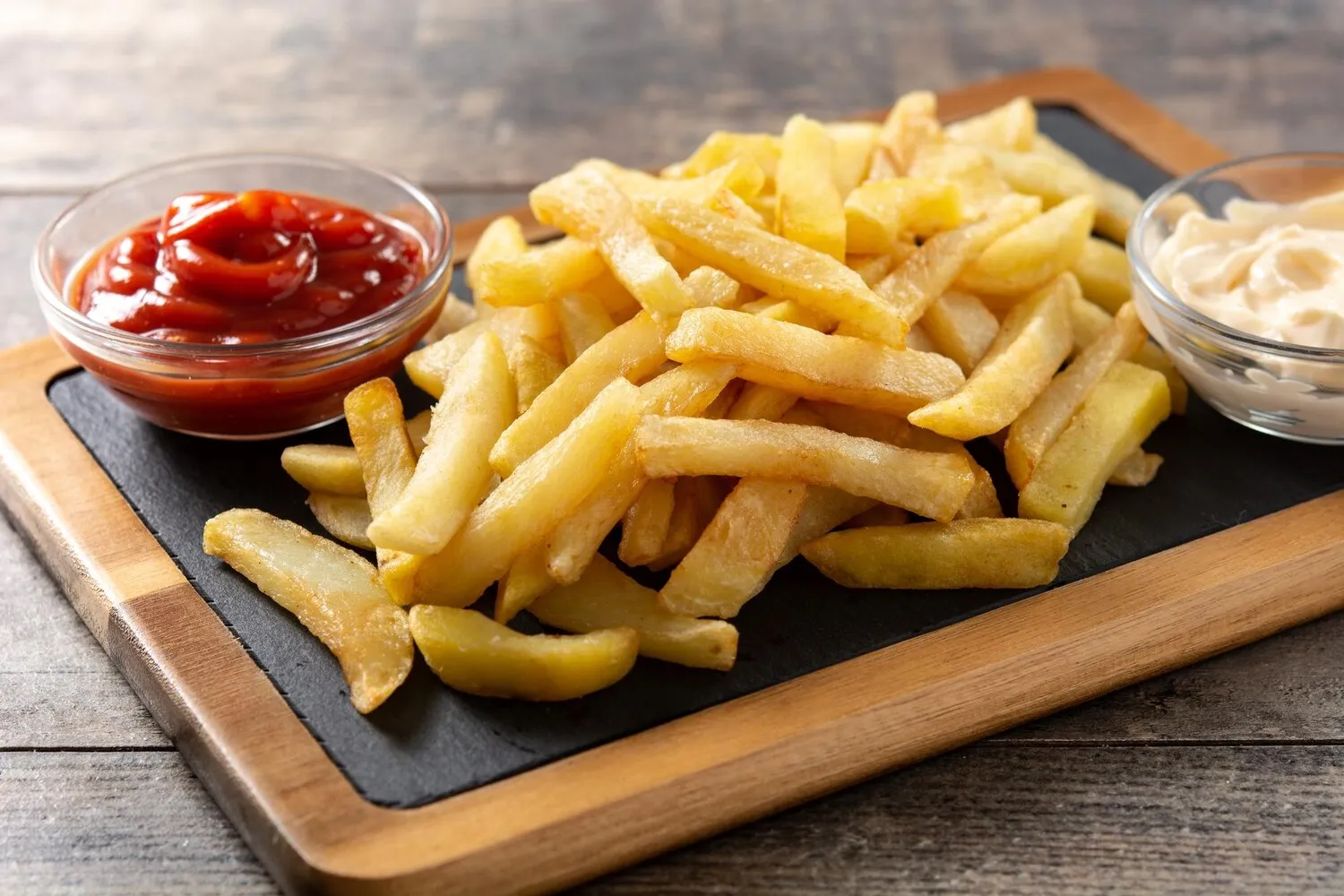
Onion Rings
Portion of onion rings
Nutrition Facts
* The % Daily Value (DV) tells you how much a nutrient in a serving of food contributes to a daily diet. 2,000 calories a day is used for general nutrition advice.
Burger Club
While the exact origins are debated, deep-fried onion rings emerged in the early 20th century, likely influenced by similar fried vegetable dishes gaining popularity. Early recipes appeared in cookbooks and advertisements, establishing them as a common American side dish.
Onion rings are a quintessential American comfort food, commonly found as a side dish or appetizer in restaurants, diners, and fast-food chains.
Casual Dining Staple
Onion rings are a standard offering in many casual dining establishments, especially those serving burgers, sandwiches, and other American classics.
Fast Food Favorite
They are a popular alternative to french fries at fast-food restaurants, often seen as a slightly more indulgent or flavorful option.
Game Day Snack
Onion rings are frequently served as a party snack or appetizer, particularly during sporting events and gatherings.
Onion rings offer a delightful combination of sweet onion, savory batter, and crispy texture.
The inherent sweetness of the onion is balanced by the savory, often seasoned, batter which can include salt, pepper, garlic powder, paprika, and other spices. The deep-frying process creates a crispy exterior, providing a textural contrast to the soft, cooked onion inside. Common dipping sauces like ketchup, ranch, or aioli add further layers of flavor.
Use the Right Onions
Sweet onions like Vidalia or Walla Walla are ideal for onion rings as they have a mild flavor and caramelize well.
Chill the Onions
Soaking the sliced onions in ice water for about 30 minutes before battering can help to reduce their pungency and create a crisper ring.
Use Cold Battered Rings
After battering, placing the onion rings in the freezer for 15-20 minutes helps the batter adhere better and prevents it from separating during frying.
Maintain Oil Temperature
Maintaining a consistent oil temperature (around 350-375°F or 175-190°C) is crucial for achieving a golden-brown and crispy exterior without burning the onion.
Explore additional Side Dish dishes and restaurants
Explore Side DishDiscover top dining spots and culinary experiences in Pouso Alegre.
Explore Pouso AlegreLearn more about the food culture, restaurant scene, and culinary heritage of Brazil.
Explore Brazil

